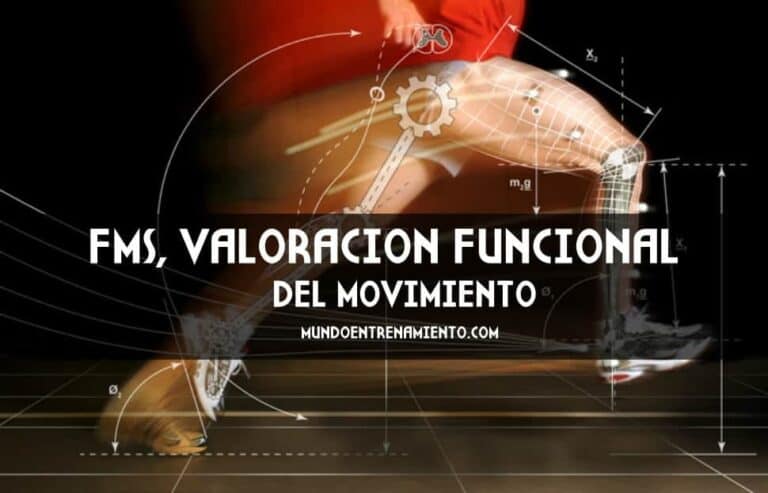Functional training
La alimentación en el deporte. Otro paso más para llegar a lo más alto de tus metas deportivas. Pero con tanta información suelta por internet, seguro que estás hecho un mar de dudas sobre qué comer y qué no comer para tus entrenamientos.
Que si dieta cetogénica, que si la paleo, los hidratos de carbono, el ayuno intermitente… Y mil cosas más. Por eso en esta sección queremos aclarar y despejar tus dudas sobre la alimentación deportiva.
Te hemos dejado una gran cantidad de artículos serios y rigurosos en los que podrás encontrar la información que llevas buscando desde hace tiempo.
Todos ellos, están escritos por profesionales del sector, que han revisado la literatura científica, para darte una visión fehaciente de cada aspecto a tratar dentro de la alimentación.

Nutrición
Aprende aspectos sobre alimentación y nutrición deportiva
Suplementación deportiva
Saca el máximo partido a tus entrenamientos con la suplementación deportiva.
- Nutrición y Suplementación en deportes de resistencia.
- Mejores proteínas para ganar masa muscular.
- Suplementación deportiva en el culturismo natural.
- Suplementación con leucina.
- Suplementación con cetonas.
- Citrulina Malato o SARMs.
- Suplementación con Aminoácidos Esenciales.
- Selenio.
- ¿Puedo mezclar creatina y proteína?
Novedades y últimos artículos sobre alimentación

What is functional training?
Functional training is an exercise modality that has gained popularity in recent years, and not for nothing.
This type of training seeks to improve the quality of life and physical performance of people, focusing on exercises that mimic natural movements and everyday activities. Below, we explain in detail what functional training is, its benefits and how you can incorporate it into your routine.
What is functional training?
Functional training is an exercise modality that focuses on the development of physical skills and abilities that are necessary to perform daily activities or sports.
Unlike conventional training, which tends to focus on isolated and specific exercises for certain muscles, functional training seeks to work together muscles, joints and energy systems of the body.
What are the benefits of functional training?
Incorporating functional training into your exercise routine can bring you a number of benefits:
- Improved mobility and flexibility: By including exercises that mimic natural movements, functional training helps improve joint mobility and flexibility.
- Injury prevention: By strengthening muscles and joints together, this type of training contributes to injury prevention when performing daily activities or sports.
- Development of motor skills: Functional training also helps develop motor skills, such as balance, coordination and agility, which translates into improved performance.
- Weight loss and toning: By involving multiple muscle groups in a single exercise, functional training promotes calorie burning and muscle hypertrophy.

Remember, before beginning any exercise program, it is important to consult with a health professional, such as a sports physician or physical therapist, to ensure that you are performing the activity safely and appropriately for your needs.
In summary, functional training is an excellent option to improve your quality of life and physical performance, as it allows you to work together muscles, joints and energy systems of the body. Do not hesitate to incorporate this exercise modality into your routine and enjoy its multiple benefits.
At this point, a series of characteristics of functional training will be mentioned .
Training motor skills. Coordination abilities and those related to basic physical abilities are related to energy production pathways, related to metabolic pathways. Thus, certain principles and strategies can be applied to increase the effectiveness of the training process.
Tonic rather than phasic function. The tonic function is the muscular tension at rest, and is responsible for fixing the body segments. And the phasic function is that capable of originating movement. Establishing a logical order to be able to produce movement, the body segments must first be fixed.
Stabilization and portency. As a result of the previous point appears the importance of the tonic function to increase the technical quality of the movements.
Stabilization means to give security and control to movements, balance and proper posture. Functional training will pay special attention to the systems responsible for the stabilization of the human body. This will result in lower risks of injury and lower health risks.
Specific training of spinal muscles. When looking for increased exercise safety and effective and safe work, attention should be paid to functional training of the spine, as well as the pelvis and hip.
The spine has a complex muscular system, which is responsible for its stability, mobility and flexibility. These muscles are arranged in 3 layers, with those of the deep layer being responsible for stability and posture, and those of the superficial layer for mobility.
Balanced training: strength, flexibility and posture. Strength training is necessary, but also an optimal relationship between the forces acting on the body, so we must seek an adequate muscle tone and an ideal joint functionality.
From the latter, it is necessary to include flexibility training, together with strength and postural stability training.
Diagonal or triaxial training. This is one of the most differentiating characteristics of functional training. It consists in the fact that performing a global exercise involves using all possible axes of movement, both in contraction and stretching. They often arise from diagonal movement trajectories and from contractions and stretching with torsions.
1. Functional training is adapted to each person. The movements have levels of difficulty that allow them to be performed independently of the physical condition of the person, age, gender, etc.
2. Contains movements of activation of the core zone, this serves to stabilize the spine against external force. To achieve this, a series of static and dynamic posture patterns are followed in daily training.
It serves to improve the functionality of the human body because it respects the movement patterns. This allows to improve the performance of the same in daily actions such as sports.
Functional training improves the relationship between the nervous and musculoskeletal systems, resulting in fast, responsive and powerful movement patterns.
4. Daily actions added to the hectic pace of life create incorrect postures. For example, sitting for a long time in the office, on the way to work sitting in the car, etc., can lead to muscle imbalances. Starting a functional training program will improve body posture and muscle imbalances as each zone works in relation to its function.
5. By training the body as a unit it allows each session to work the whole body, without leaving out any pattern. Muscles are activated in sequences to produce the desired movements working as a "whole".
6. Performing functional training is easy because they are movements that everyone is familiar with, pulling, pushing, bending, running, walking, rotating, etc. Functional training applies movements from everyday life and sporting gestures.
7. It is fun, it uses materials and movements that collaborate with playful training. It can be done in a group, favoring integration among participants. Integration collaborates in generating bonds that allow people to maintain continuity with physical activity.


